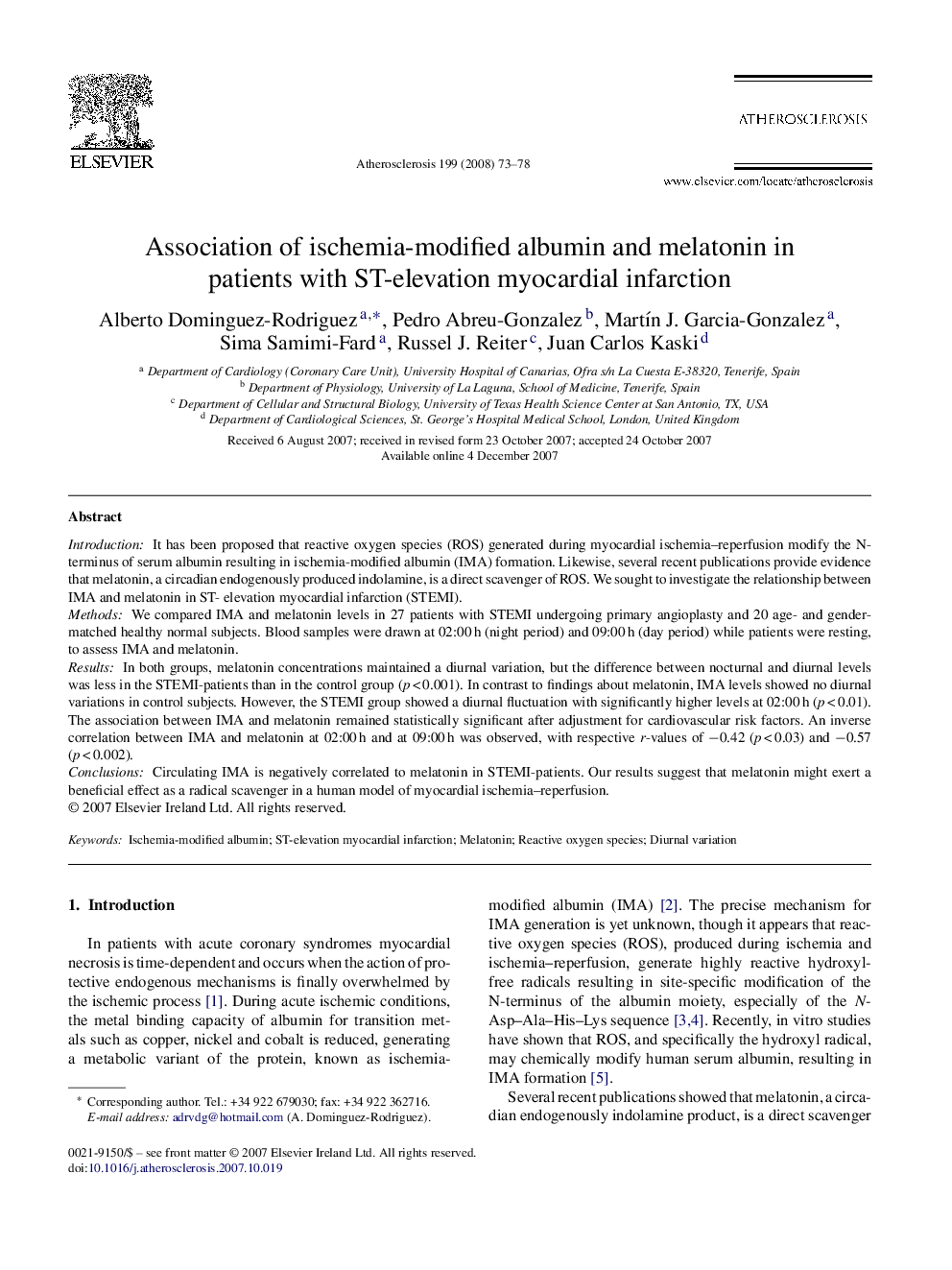| Article ID | Journal | Published Year | Pages | File Type |
|---|---|---|---|---|
| 2894090 | Atherosclerosis | 2008 | 6 Pages |
IntroductionIt has been proposed that reactive oxygen species (ROS) generated during myocardial ischemia–reperfusion modify the N-terminus of serum albumin resulting in ischemia-modified albumin (IMA) formation. Likewise, several recent publications provide evidence that melatonin, a circadian endogenously produced indolamine, is a direct scavenger of ROS. We sought to investigate the relationship between IMA and melatonin in ST- elevation myocardial infarction (STEMI).MethodsWe compared IMA and melatonin levels in 27 patients with STEMI undergoing primary angioplasty and 20 age- and gender-matched healthy normal subjects. Blood samples were drawn at 02:00 h (night period) and 09:00 h (day period) while patients were resting, to assess IMA and melatonin.ResultsIn both groups, melatonin concentrations maintained a diurnal variation, but the difference between nocturnal and diurnal levels was less in the STEMI-patients than in the control group (p < 0.001). In contrast to findings about melatonin, IMA levels showed no diurnal variations in control subjects. However, the STEMI group showed a diurnal fluctuation with significantly higher levels at 02:00 h (p < 0.01). The association between IMA and melatonin remained statistically significant after adjustment for cardiovascular risk factors. An inverse correlation between IMA and melatonin at 02:00 h and at 09:00 h was observed, with respective r-values of −0.42 (p < 0.03) and −0.57 (p < 0.002).ConclusionsCirculating IMA is negatively correlated to melatonin in STEMI-patients. Our results suggest that melatonin might exert a beneficial effect as a radical scavenger in a human model of myocardial ischemia–reperfusion.
